RATHMINES AVIATION
HERITAGE:–
A CATALINA
HOMECOMING PROJECT
In June 2012 I was able to interview and have since then become interested and ended up assisting in a few ways, on a rare aviation project underway in Sydney/NSW. The aim is to bring to a former RAAF base a flyable Catalina WW2 aircraft as a tribute to the men who died flying such aircraft on missions in WW2 in South West Pacific war zone.
A
rather unique and very ambitious aviation project has been underway for several
years at two locations: one being Bankstown
airport, and the other at Rathmines. The common goal at these two sites is to
preserve an important part of Australia’s
World War II aviation legacy for future generations.
With
such important maritime aviation heritage in its boundaries, Lake Macquarie City
Council initiated in 1994, a Plan of Management for the site and this was
further supported with a Conservation Management Plan in September 1997 for the
Rathmines Park site. By the early 2000s, the
former RAAF Rathmines area was a protected reserve under a heritage trust title.
In 2005 the site was listed by the Heritage Council of NSW as a place of State
and Local significance. In 2010 a Memorandum of Understanding was signed
between the Catalina Flying Memorial Limited (CFML), Rathmines Catalina
Memorial Park Trust, Lake Macquarie City Council, Rathmines Memorial Bowling
Club and the Lake Macquarie District Historical Society. The signatories to the
MOU hope to facilitate the construction of a hangar and museum at the former
Rathmines WWII RAAF base. The aim is to have an operational and static Catalina
as the centre pieces of a museum display of historic RAAF memorabilia
associated with the Base.
FORMER RAAF BASE AT
LAKE MACQUARIE NSW
The search for potential RAAF flying boat bases commenced
prior to WWII, with preliminary surveys carried out in 1936. Sheltered alighting
areas were selected at Lake Macquarie just north of Sydney, and in 1938 Rathmines was selected as
the ideal site for the Air Force base. During late 1939 new flying boat units were
established, or were transferred from Point Cook to Rathmines. The first
aircraft to operate from the new base were Supermarine Seagulls from 9 Sqn.
WWII CATALINA FLYING
BOAT OPERATIONS
In
1941 the Consolidated PBY Catalina began to arrive in Australia in earnest.
The RAAF took delivery of 168 Catalinas in all. The Rathmines RAAF facility grew
quickly, and became Australia’s
primary flying boat training and conversion base. Flying boats staged through
bases in Northern Australia on operations deep
into enemy held territory. The Catalina became known as ‘Black Cat’ because of the
dark camouflage necessary for covert night operations. The Catalina crews navigated
by the stars and flew ultra-long range missions that other aircraft of the era could
not achieve.
The
Catalina was a very versatile aircraft that could be adapted to a number of
mission roles. These included aerial reconnaissance, coast watch, minelaying,
supplying troops, bombing and air sea rescue missions. RAAF Catalinas more
famous missions included the mining of Manila’s
Harbour and being involved in the Battle of the Coral Sea. Aircraft departing from Rathmines conducted
maritime patrols along the Australian east coast to search for roaming Japanese
submarines. Although slow, the Catalina had tremendous endurance, and could fly
very long range sorties. After the fall of Singapore
to the Japanese in 1942, QANTAS maintained a secret non-stop air route between Perth and Ceylon.
This 5,600km Catalina flight maintained a vital mail link between Australia and England
from June 1943, departing from the Swan
River, Perth
heavily laden with fuel and alighting at Lake
Koggalla, Ceylon
more than 28 hours later. Passengers on those flights were awarded a
certificate affording them membership of “The Secret Order of the Double Sunrise”
since the aircraft was inevitably airborne for more than 24 hours.
Meanwhile,
Rathmines reached its peak strength of almost 3,000 personnel during 1944-45, with
the base spread across an extensive area with more than 230 buildings and other
marine facilities. Rathmines was at that time the largest flying boat facility
in the Southern Hemisphere. On base there was a technical training section which
ran covering seamanship, celestial navigation, gunnery and trades
training. The other main training unit
was 3 Seaplane Operational Training Flight (3 OTU). 3 OTU trained approximately
2,270 airmen for the flying boat operations during WWII.
A
snapshot of units operating at the base in late 1944 involved upwards of 40
aircraft:
·
9 Sqn (Supermarine Walrus),
·
11 Sqn, 20 Sqn and 43 Sqn (Consolidated
Catalina),
·
40 Sqn (Avro Sunderlands and Martin Mariners),
·
41 Sqn
(Dornier Do 24K, Mariner and Shorts 23 Empire)
·
107 Sqn (Kingfisher) Squadrons
·
3 OTU – (Operational Training Unit)
More
than 320 RAAF flying boat personnel lost their lives on active service during
WWII.
POST WAR BASE USE
By
the end of the war Catalinas equipped 11, 20, 42, and 43 Sqns, two
communications units 6 and 8 and three air-sea rescue flights 111, 112, and
113. After WW2 the RAAF used Catalina flying boats up until mid 1952 and then
withdrew them from service. Rathmines was kept operational after this but was
instead used as a ground training base for the new Officers’ Training School
and utilised training facilities for senior non-commissioned officers, physical
training instructors and national servicemen. The based was finally closed in
late 1960 and sold off to Lake Macquarie City Council in 1962. Most of the
buildings had by this time been removed from the site or were adapted as
community facilities. The main Rathmines base area has lost a large part of the
atmosphere of a military base because most of the buildings, once densely
packed on the peninsular north and east of the Hospital and Rosemary Row, have now
been relocated or demolished. In the 1950s, one of the WW2 era large hangars
was taken to RAAF Richmond for the C-130 Hercules operations. Fortunately the
sturdy and broad concrete Catalina slips have remained untouched since 1950s
THE RATHMINES CATALINA FESTIVAL
The Rathmines Catalina Festival aims to educate the wider community,
especially the younger generation, about the Rathmines base and the
significance it has to the way of life we now enjoy across Australia. The
Festival is the largest community event held in the Lake Macquarie
area. This year should be more successful than ever.
This
year on the 3rd of November, the Catalina Festival will play host to
an operational Catalina. The Historical Aircraft Restoration Society from Albion Park near
Wollongong, is
planning to support the Festival by bringing its fully restored Catalina VH-PBZ
to Rathmines. HARS plan to alight on the lake and then taxi up the boat ramp at
the former Rathmines RAAF base. The HARS aircraft will then be on public
display for the day.
The
Catalina Flying Memorial Limited is also attempting to get its PBY-6A
(registered appropriately as VH-CAT) operational prior to the Festival, so it
too can appear beside the HARS
Museum aircraft on the
ramp. Various smaller amphibious aircraft will also be attending the Festival,
along with other flying displays during the day and many other attractions.
In
the week leading up to the Festival, a large number of local school children
are set to be welcomed to education sessions hosted in a former base building,
where they will learn about the role Rathmines played during World War II with
various displays and presentations. I will be hopefully taking part in these sessions, explaining to the school kids about the flightgear worn by the RAAF aircrew, as i am bringing along a few parts of my rare WW2 flightgear rarely seen nowadays in Australia. I will also have some more flightgear on show on the Festival day.
The last time a Catalina was seen at Rathmines was as far
back as 1981 when the local Australian branch of the
then Confederate Air Force, landed a PBY-5A on Lake Macquarie and then taxied
the aircraft tup the Rathmines base aircraft ramp, which resulted in a minor
nose gear issue, as the wheel didnt lower as the aircraft came out of the
water. This Catalina is now grounded and in storage at Pima, Arizona
in the US.
VH- CAT BACKGROUND
VH-CAT started its long life during the last few months of
WW2 assigned to the US Navy as Catalina BuAer 46665. She flew from 1945 until
March 1947 mainly in the Aleutians and Alaska
areas. Following an overhaul in 1948, the Catalina was assigned to Norfolk, Virginia and was
then later dispatched to a squadron engaged in submarine warfare trials near Key West, Florida.
The next significant event in her career occurred in March 1951 when she was
involved in a mishap at a naval base after her brakes failed while taxiing and
she hit a parked Grumman TBM-3E Avenger. In March 1953, she was placed in
storage at NAS Litchfield Park,
Arizona, having accumulated a
mere 2,512 flying hours. She was then sold to a private buyer and removed from
the naval inventory in August 1956. In 1957, she was registered on the Chilean
civil aircraft register as CC-CNG and was mothballed until 1959, when she was
acquired by the Chilean aviator Commandante Roberto Parrague.
Roberto had built a company called ASPAR which used several
Cats. At this time the aircraft again obtained a new registration as CC-CNP.
Parrague also christened the Catalina as “Manutara II” in honour of a
previous Chilean Catalina that he had flown to Easter
Island in 1951. Manutara means ‘frigate bird’ which by
coincidence brings an important Catalina related Australian connection to the
event. Famous Australian pilot P.G. Taylor had stopped over on Easter Island
while flying from Australia
to Chile
soon after Parrague’s visit in 1951. P.G. had noticed a derelict Catalina
called Manutara marooned on the island but he did not realise the
significance of the plane at the time. In 1961, CG-CNP was flown to Easter Island and was used mainly to ferry freight and
passengers to and from the Juan Fernandez Archipelago. In the late 1960s
Parrague’s company ASPAR diversified into the fire bombing/fighting business,
which then saw CC-CNP sent to Canada
to become a firebomber where it was modified with internal water tanks and drop
doors located on the lower fuselage. In this new role, CC-CNP was first given
the tanker number '65' but later became known as '35'. In July 1988, the aircraft was flown to
Spain
when ASPAR was awarded an overseas firefighting contract. By the 1989 she was
working as a chartered fire bomber in Portugal for Aerocondor. By the
earlier 1990s the fire bombing capabilities she carried were declared obsolete
due to advances in aircraft and systems used and she was retired from service.
After a few more years she was luckily chosen by a few Australians as a new
warbird aircraft and thus began a campaign to bring her to Australia. Over
a few years the necessary support, money and sponsorship was raised to enable
the acquisition of the aircraft. During 2008 an epic long flight across the globe
was planned and then undertaken which saw the Catalina finally land in Sydney at Bankstown
Airport in late 2008.
CFML RESTORATION WORK ON VH-CAT
For
the past few years, the PBY-6A Catalina now registered as VH-CAT has been nestled
between hangars at Bankstown
Airport undergoing painstaking
restoration work to meet Australian Warbird Association standards. The project needs
help from skilled tradesmen and Licensed Aircraft Maintenance Engineers (LAMEs).
Every weekend at Bankstown
there is a regular working bee aimed at restoring the Catalina to flying order.
Australian
Pilot met up with some of the volunteers on its recent visit to Bankstown, and found a
core group of passionate people involved in the CFML operation. Leading the
team is David Sieber. Dave was a LAME with Annett Airlines back in the 1970s, and
worked on the Sunderland and Sandringham flying boats which flew to Lord Howe Island. David has been regularly supported by
LAMEs Roger Mathysen and Tony Pitt, and volunteers Len Linfoot, John Goldsborough,
Patrick O’Hara, and Terry Woolard.
A
recent new sponsorship gain acquired by one of the volunteers on the project, has
being the welcomed support given by Dulux Paints, which will see the company
donating to the project paint for the planned repaint of the aircraft. A big
part of the project still needing to be found is money to finish off the
restoration repairs and associated costs. It is expected that further funding
is needed to be raised and this is to be in the range of $100,000-$200,000 to
get the Catalina back to airworthy status and full restored. Any help to reach
this funding goal is much appreciated by the CFML see contact details at end of
article if interested.
CATALINAS IN AUSTRALIA
There is currently only one flying Catalina in Australia: VH-PBZ,
which is operated by HARS at Albion Park NSW. This aircraft is a sister ship to
the CFML aircraft VH-CAT. The Qantas Founders Museum
at Longreach in Queensland
recently took delivery of a similar Catalina. Other static Catalinas on display
around Australia includes the Powerhouse museum in Sydney with the historical P.J.
Taylor aircraft, RAAFA Museum at Bull Creek Perth which has a former US Navy
aircraft, the recently opened Lake Boga Museum, Victoria which has a former
Dutch Catalina, RAAF Museum Point Cook which has a partially restored civil
modified to WW2 aircraft and another airframe is reported as being in private
storage in WA. Another Catalina is yet to be restored in Victoria
for the Moorabbin
Aviation Museum
in the long term.
THE CATALINA –
UP CLOSE
Over 4,000 Catalina aircraft were built between 1935 and
1946. The Catalina was normally powered by two Pratt & Whitney R1830 radial
engines. These pushed the aircraft along at a relatively slow 125kt cruise speed.
However, the incredible endurance of the Catalina made it suitable for long-range
missions that were beyond the performance limits of most contemporary aircraft
at the time.
General characteristics
Crew: 8 — pilot, co-pilot, bow turret gunner, flight
mechanic, radioman, navigator and two waist gunners
Length:
63 ft 10 7/16 in (19.46 m)
Wingspan:
104 ft 0 in (31.70 m)
Height:
21 ft 1 in (6.15 m)
Wing
area: 1,400 ft² (130 m²)
Empty Weight: 20,910 lb (9,485 kg)
Max. takeoff weight: 35,420 lb (16,066
kg)
Performance
Maximum speed: 196 mph (314 km/h) Cruise speed:
125 mph (201 km/h)
Range: 2,520 mi (4,030 km) Service ceiling: 15,800 ft (4,000 m)
Rate of climb:
1,000 ft/min (5.1 m/s) Wing loading: 25.3 lb/ft² (123.6 kg/m²)
Armament 3× .30 cal (7.62 mm) machine guns (two in
nose turret, one in ventral hatch at tail), 2× .50 cal (12.7 mm) machine guns (one in each waist blister),
4,000 lb (1,814 kg) of bombs or depth charges; torpedo racks were also
available
Below are photos i took on June 5 2012 visit.
My guide on the aircraft was Malcolm, who is a enthusiastic volunteer with the CFML project.
Patriotic nose artwork was still present
The hard working volunteers i met Ken, David, Terry and Malcolm
On the June 30 2012 visit , i was able to meet a very special CFML visitor , Mr Patricio Parragué who was present at the restoration. Patricio's connection to the project is that his uncle Mr Roberto Singer, was a friend of Captain PG Taylor, and ex owner of the two PBY 6A now based in Australia that flew from Portugal to Australia.
It was a nice experience to meet someone behind the Catalina's history and Patricio and myself have since formed a good friendship. He also brought a unique Catalina flight patch and a special scale model of the Catalina in on the day to show.
We expect to know more soon when this aircraft may refly after undergoing further restoration work.. It will be a great experience when it does.
Also on June 30 i was extremely honoured to be taken up on a Cessna 172 for a flight over Rathmines base area and then later on attended the former base officer mess for a dinner. Here are these photos.
In the centre is the officer mess building now a local club and further across to right is the former concrete ramp area where hangers housing the Catalinas and other aircraft were placed.
The long line in trees on the left side of the tree area, used to be a small wartime airstrip used by the base and now a road.
FURTHER
INFORMATION ON RATHMINES PROJECT
The main upcoming
event is the Rathmines Catalina Festival to be held on November 3rd 2012.
For
more information on the CFML operations or if you like to volunteer and help
get the Catalina flying again sooner, visit the CFML main webpage http://catalinaflying.org.au. Both the
Catalina project and the Catalina Festival have separate facebook pages which
can be found under searching or at these links. https://www.facebook.com/groups/38244348751/
and https://www.facebook.com/pages/Rathmines-Catalina-Festival/137100446395385

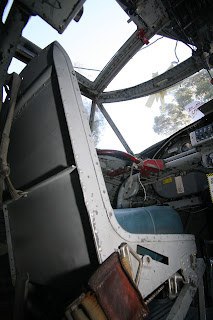


















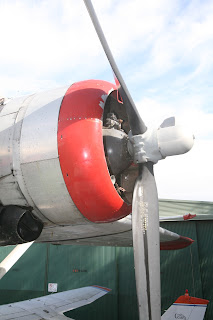





















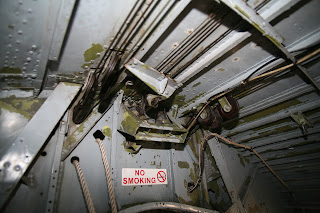



















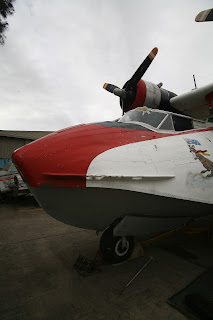




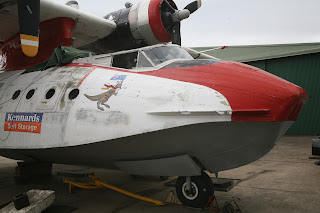





















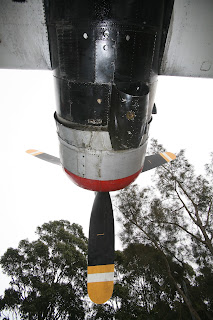































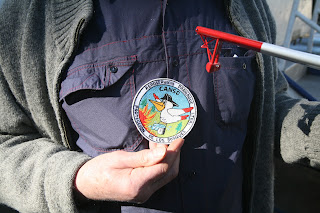
































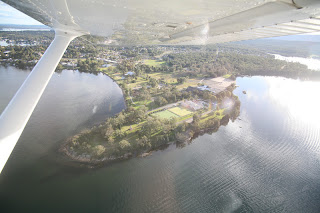
















No comments:
Post a Comment